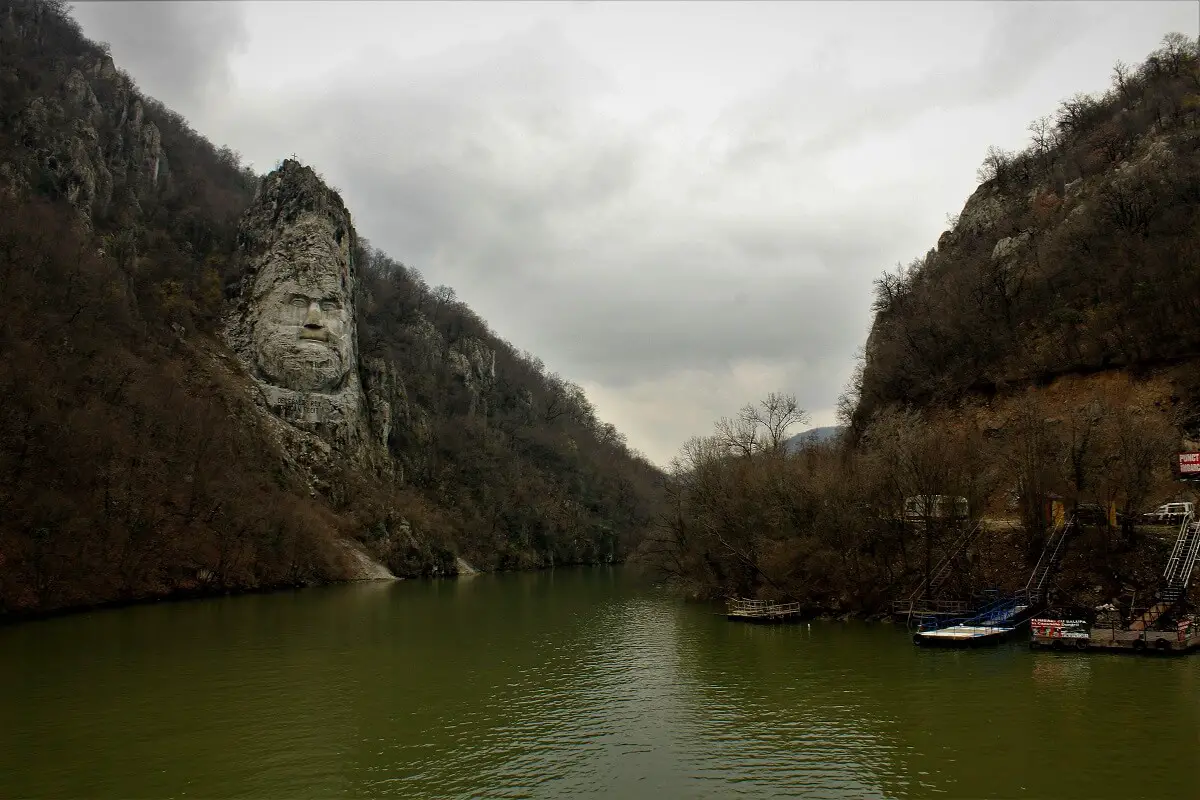
From its spring in the Black Forest Mountains to its delta at the Black Sea, the Danube River flows through 10 countries and 4 capitals. The landscapes created along the way are truly unique, but those in the gorges offer a rare spectacle. The Danube Gorges begin in Baziaș and end in the area of the Iron Gates I hydroelectric power plant, approximately 150 km downstream. It is difficult to specify the most beautiful segment, but in the area of the Danube Boilers can be found many of the most famous attractions. Here you can admire picturesque landscapes, visit caves and monasteries, go on a boat trip or make short mountain trails for unforgettable views.
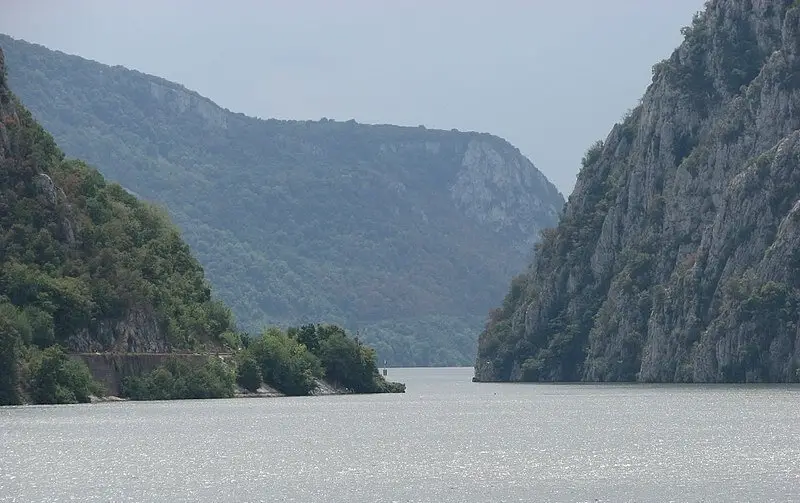
What are the Danube Boilers?
At the Boilers, between the Carpathians and the Balkans, the Danube narrows the most. The sector of approximately 9 km in length is divided in two: Big Boilers and Small Boilers.
In this part, the river is flanked by high, straight walls, approaching up to 230m from each other. As a result, before the construction of the Iron Gates I dam, the speed of the water increased greatly. The Danube was much more turbulent and produced vortices on the surface in this area, making navigation difficult. Sometimes the water seemed to be boiling, hence the name of Danube Boilers.
Due to the small distance between the two banks, sad stories from the communist era are also connected to the Danube Boilers. Many Romanians, out of a desire for freedom, tried to cross the 230m swimming. Some succeeded, but others were shot by border guards or drowned in the Danube.
Today, the Danube Boilers is considered one of the most beautiful areas in Romania, full of vegetation and peace. It is the ideal place for a holiday or a relaxing weekend. For the most active, the area is rich in tourist attractions, both on the Romanian and Serbian shores.
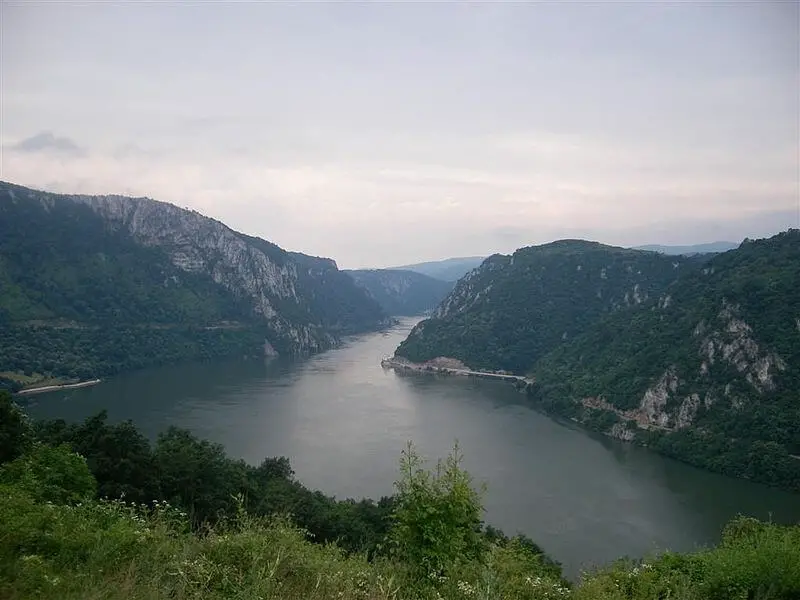
How do you get to the Danube Boilers?
The Small and Big Danube Boilers are located between Romania and Serbia, or the Balkans and the Carpathians. On the Romanian side, in order to get there, you should travel to Mehedinți County, 16 km from Orșova, in the area of Dubova and Eșelnița. The nearest airports are: Craiova (160km), Belgrade (205km) and Timișoara (250km) and Bucharest (370km).
Orșova can be reached from Bucharest by car on the E70 (Pitești – Craiova- Drobeta Turnu Severin – Orșova). The distance between the two towns is almost 400 km. From there, DN57 is the access road to the boilers, crossing a large part of the Danube Gorge. If you prefer rail transport, the nearest train station is in Orșova. From there you can take taxis or minibuses. Another, more spectacular option, is by boat or speed boat. Tours are offered by several local companies.
Another option, if you’re a fan of organized tours or believe driving in Romania or Serbia might be dangerous (and actually it’s not a piece of cake), would be a guided tour Belgrade. Unfortunately, I couldn’t find any from one of the main cities in Romania. But I found three in Belgrade that you can choose from:
Where can you stay at the Danube Boilers?
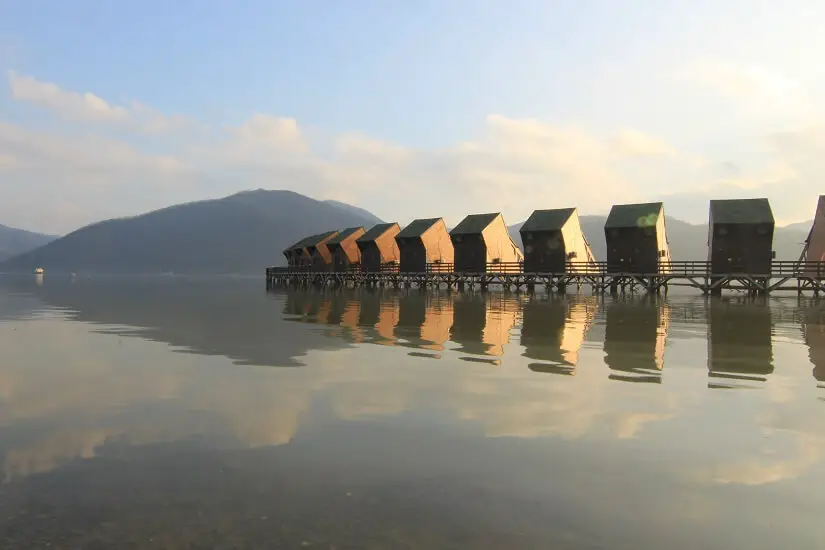
Because it’s a complex place, where you can combine discoveries with relaxation, you will need a few days or at least a weekend. In Eșelnița and Dubova there are numerous guesthouses that offer rooms for all budgets, but also traditional, Romanian or Serbian food.
A few years ago, the first floating hotel in Romania, the Egreta Complex, was inaugurated in Berzeasca. These are wooden bungalows on pillars. They have a living room, a small kitchen, an upstairs bedroom and a terrace overlooking the Serbian coast.
6 Landmarks to visit in the Danube Boilers
The bas-relief of King Decebal
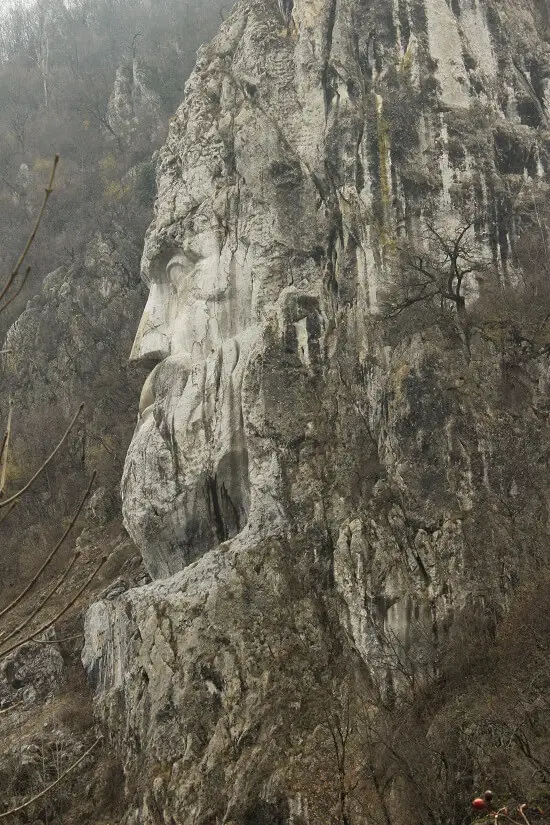
The most famous attraction in the Danube Boilers area is the rock carved face of Decebalus. It is located at the confluence of Mraconia River with Danube, between Eșelnița and Dubova, as a reply to the Tabula Traiana memorial plaque located a few hundred meters downstream, on the Serbian shore. The monument was made from private funds by the businessman Iosif Drăgan. 12 mountaineering sculptors worked on the effigy entitled “Decebalus Rex” for 10 years. It was only completed in 2004.
Decebalus was the son of Scorillo and occupied the throne of Dacia at a time when the Roman Empire was expanding. The historian Dio Cassius made him the following portrait: “He was very skilled in war and deeds, knowing how to choose the occasion to attack the enemy and withdraw in time. Skillful in racing, he was brave in battle, knowing how to use a victory and to escape a defeat, for which he was for a long time a feared enemy of the Romans. ” If you have doubts regarding the resemblance between the bass-relief and the great Dacian leader, look at the sculpture from one side and you will rediscover the same face from the history books.
Romanian and foreign tourists are impressed by the size of the sculpture. This is the largest sculpture in Europe, 55m high and 25m wide. In fact, in a hotel in Gothenburg, an American told us that he wants to visit Romania especially to see it.
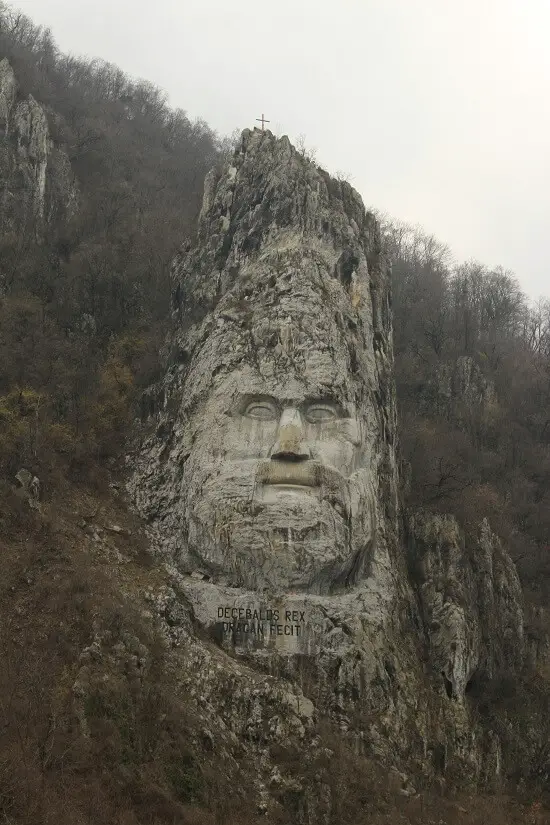
Ponicova Cave
Ponicova Cave, dug at the crossing of the Danube through the Ciucarul Mare massif, is the largest in the entire Danube Gorge. Its galleries are over one kilometer and a half long. It can be accessed both on land and on the Danube, by boat, in which case you can enter about 10m.
The cave has several levels of galleries, the lower ones being active. Of the fossil galleries, the most spectacular is the Column Hall of the Great Serpent. Here, water and time created stalactites, stalagmites, domes, columns, cave pearls, curtains, etc. In the cave were found fossils of cave bear and hyena, as well as traces of the Halstatt culture. It is also known as the Bat Cave, due to the bat colonies that live inside. Large guano formations can also be seen.
The cave is not modernized, and for visiting you should have adequate equipment on you, consisting of rubber boots, flashlight and helmet. Galleries can be flooded during floods, and tourist access is prohibited. For this reason, it is recommended to visit the cave in May – October.
Veterani Cave
Unlike the Ponicova Cave, it can only be visited on water. It got its name from the fact that the Austrian general Friedrico Veterani chose it as an observation point in the seventeenth century. A large number of bird bones and animals were discovered here. Therefore, a series of legends and stories were born. It is believed that in Dacian times the cave was used as a sanctuary dedicated to Zamolxe, and the animals were sacrificed as an offering. Another legend says that here was hidden the silver treasure of Empress Maria Theresa, belonging to the Austro-Hungarian Empire.
Mraconia Monastery
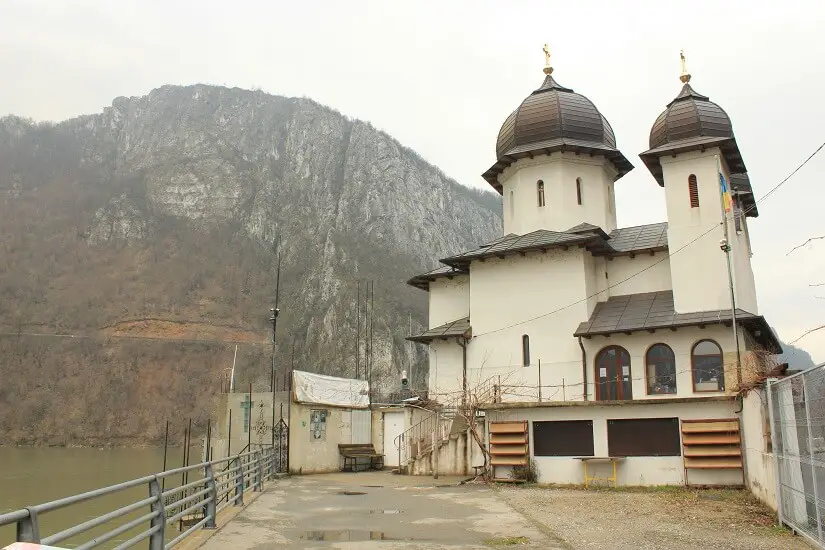
It is located in the bay with the same name, very close to the bas-relief of Decebalus. The word mraconia means “hidden place” or “dark water”, and it suggests its history.
First of all, you need to know that this is the new monastery. The old medieval monastery Mraconia is located under the waters of the Iron Gates accumulation lake, being swallowed by it, like many others. Its ruins can still be seen when the water level is very low. They were christened by the locals “the underwater monastery”.
The new place of worship was built in 1993 above the water, being supported by concrete pillars. Here was in the past a former point of observation and direction of the vessels on the Danube. It was built because the relief in the area did not allow the passage of two vessels simultaneously.
Ciucarul Mare Massif
The trail on the Ciucarul Mare massif starts from Dubova, across the road from the stadium. I did this route a few years ago and remember that, although short, it was not easy. But the view from the top was fully worth it. The end of the route is right on the edge of the gorge. If you decide to climb it, pay attention to possible vipers and choose suitable footwear for the mountains. The 2km path is marked with a yellow triangle and can be done in an hour.
Tabula Traiana

On the Serbian shore, close to the Small Danube Boilers, Tabula Traiana has stood for almost 2000 years. The monument was erected by Emperor Trajan in honor of the victory against the Dacians in the war of 105-106 and the completion of the Roman road. A total of 10 boards have been chiseled in the gorge, but only this one has been preserved so far.
The commemorative plaque is 4m long and 2m high. It depicts two dolphins and an eagle with a Latin text about the Roman emperor and his military achievements: “Emperor Caesar son of the divine Nerva, Nerva Trajan, Augustus, Germanicus, Pontifex Maximus, invested four times as Tribune, consul for the third time, digging rocks in the mountains and using wooden beams, made this bridge”.
Following the construction of the Iron Gates I hydroelectric power plant, the board was raised 30m, above the accumulation lake. It can only be admired more closely from a boat. Tours can be purchased from the Mraconia bay.
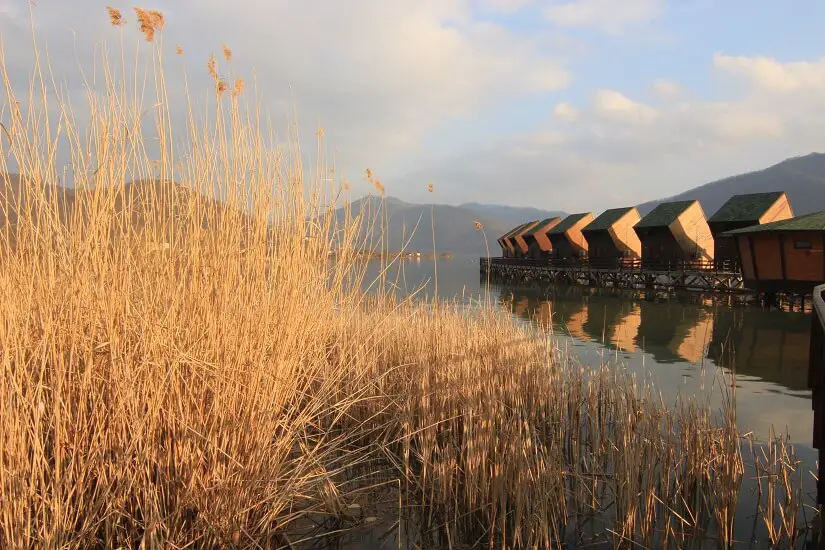
In conclusion, the Danube Boilers is one of the places each of us should see at least once. The Danube, in an attempt to cross the massive rocks, created landscapes of a special beauty. To these, man has added throughout history several other tourist attractions worth visiting. Although some of the points of interest can be seen from the car, the experience of a boat trip is incomparable.
Travel With A Spin contains affiliate links. If you make a purchase through these links, I will earn a commission at no extra cost to you. Thanks for reading!
